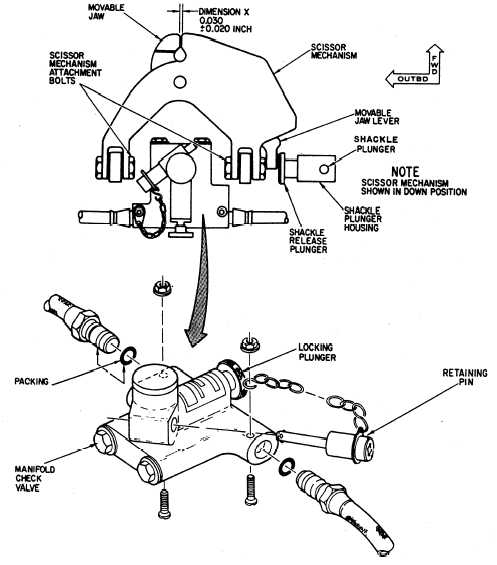Manifold Check Valve
The manifold check valve (24) (figs. 6-20 and
6-21) provides an interface between the ejection
seat and the catapult. The manifold check valve
is mounted to the top of the catapult. The valve
is held against the primary firing mechanism by
a spring-loaded plunger and a retaining pin. The
valve contains two inlet ports, which connect the
hoses from the 0.30- and 0.30/0.75-second delay
initiators. Internal check valves ensure that 400
to 600 psi gas pressure is maintained at the
catapult primary firing mechanism.
Main Beam Assembly
The main beam assembly (6) (fig. 6-20) is the
main structure of the ejection seat. The main
beam assembly consists of left and right vertical
beams bridged by three cross members. The
assembly supports the major components of the
ejection seat. Three slippers are bolted to the in-
board side of each beam to engage the guide rails
on the catapult outer barrel. The upper cross
member is used to hold and correctly position the
top of the catapult. This member withstands the
full thrust of the catapult during the ejection
sequence. The bolts that attach the upper cross
member to the main beam assembly also attach
the top latch mechanism to the left beam. The
inertia reel (12) and the upper attachment for the
seat height actuator are mounted to the center
cross member. Two tabular tubes are secured to
the center and lower cross members. The tubes
have two sliding runners that attach to the seat
Figure 6-21.—Scissor mechanism and manifold check valve.
6-30


